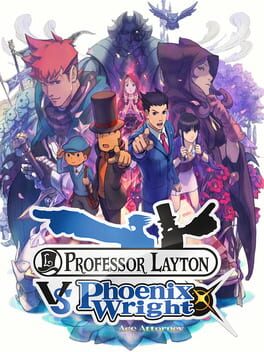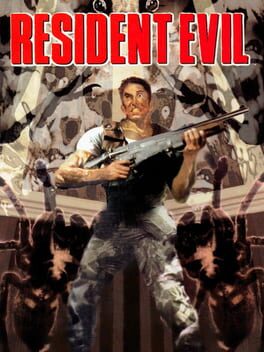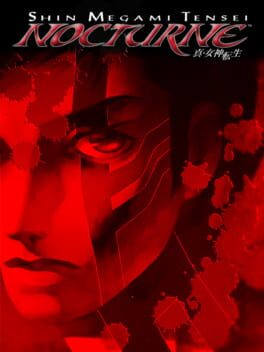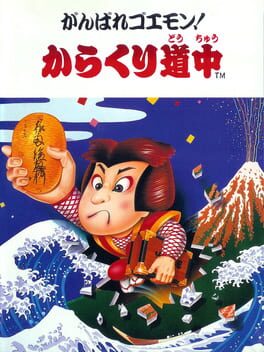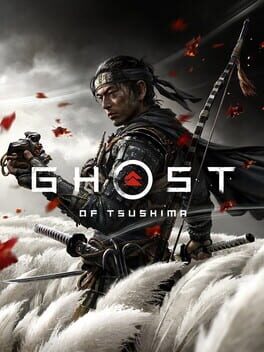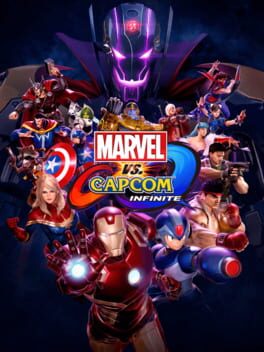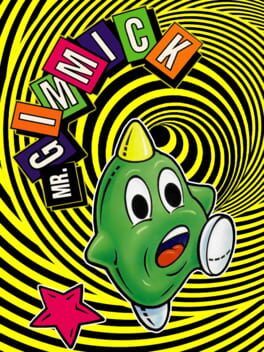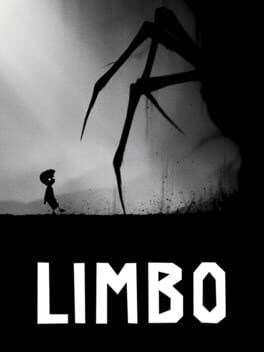SanjuroDjango
163 Reviews liked by SanjuroDjango
This review contains spoilers
i love this so much!!!
i understand some of the criticisms others may have, but, as a huge fan of both franchises, i only felt pure joy and whimsy (and perhaps Fear) while playing this <3
i will say that the puzzles definitely seem easier, and i was a bit upset that there are less puzzles than usual in this game, but i can understand that, as a crossover, this game has to be friendly to fans of both franchises. i do wish phoenix did a little more investigation (although some people act like he was ignored the entire game which is Not True?? there is a whole bit where layton is Gone) but those are my only criticisms :3
the story is absolutely insane and absurd (typical layton plot), but i love it!!
i adore the writing of the main characters so much i could talk about it for so long (especially luke, i think he's very near to perfect in this game). the way the main characters interact is amazing, for example i wasn't sure how/if layton and maya would work as a duo but they Do work!!!!
uhh long story short this game is a piece of art and i love it dearly .
i understand some of the criticisms others may have, but, as a huge fan of both franchises, i only felt pure joy and whimsy (and perhaps Fear) while playing this <3
i will say that the puzzles definitely seem easier, and i was a bit upset that there are less puzzles than usual in this game, but i can understand that, as a crossover, this game has to be friendly to fans of both franchises. i do wish phoenix did a little more investigation (although some people act like he was ignored the entire game which is Not True?? there is a whole bit where layton is Gone) but those are my only criticisms :3
the story is absolutely insane and absurd (typical layton plot), but i love it!!
i adore the writing of the main characters so much i could talk about it for so long (especially luke, i think he's very near to perfect in this game). the way the main characters interact is amazing, for example i wasn't sure how/if layton and maya would work as a duo but they Do work!!!!
uhh long story short this game is a piece of art and i love it dearly .
Resident Evil
1996
No está muy mal
La historia es creativa pero minimalista y sin mucho desarrollo, el arte y la atmósfera son magníficas y dan una excelente inmersión.
El diseño de niveles es malísimo y perezoso, y bajo la justificación de que es para vender la sensación de hostilidad, yo digo que hay otras maneras de hacerlo que no impliquen pasillos eternos, vacíos y dar vueltas en círculos para moverse a la zona de al lado.Un buen ejemplo son Dark Souls y Rain World
Las filosofías de las distintas rutas son básicas y extremas hasta el ridículo, y a diferencia de lo que (imagino?) que intenta el juego no te hacen pensar, sino que son más alternativas extremas al status quo, presentadas en cinemáticas de menos de 2 minutos. No se desarrollan fuera de eso
Los personajes son minimalistas y no tienen mucho más allá de la ideología que representan.
El gameplay es excelente y desafiante, con su propia manera de ser que lo eleva encima de muchísimos otros jrpgs, pero con el estilo artístico es el único punto notable del juego. Pero esto es un videojuego no una película, y el gameplay se lleva 3 estrellas para él solo (2 por el diseño de niveles).
No se acerca a ser uno de los mejores rpgs de la historia, pero la originalidad que tiene y las cosas que hace bien merecen la pena
7/10
La historia es creativa pero minimalista y sin mucho desarrollo, el arte y la atmósfera son magníficas y dan una excelente inmersión.
El diseño de niveles es malísimo y perezoso, y bajo la justificación de que es para vender la sensación de hostilidad, yo digo que hay otras maneras de hacerlo que no impliquen pasillos eternos, vacíos y dar vueltas en círculos para moverse a la zona de al lado.Un buen ejemplo son Dark Souls y Rain World
Las filosofías de las distintas rutas son básicas y extremas hasta el ridículo, y a diferencia de lo que (imagino?) que intenta el juego no te hacen pensar, sino que son más alternativas extremas al status quo, presentadas en cinemáticas de menos de 2 minutos. No se desarrollan fuera de eso
Los personajes son minimalistas y no tienen mucho más allá de la ideología que representan.
El gameplay es excelente y desafiante, con su propia manera de ser que lo eleva encima de muchísimos otros jrpgs, pero con el estilo artístico es el único punto notable del juego. Pero esto es un videojuego no una película, y el gameplay se lleva 3 estrellas para él solo (2 por el diseño de niveles).
No se acerca a ser uno de los mejores rpgs de la historia, pero la originalidad que tiene y las cosas que hace bien merecen la pena
7/10
Fallout: New Vegas
2010
There's nothing new I can say about the plot, but the craft that sells it is an interesting example of the 2010 era visuals. Along the gradient of rendering sophistication, New Vegas lands somewhere near the end of where its stiff NPC animations are passable before their fidelity fully exceeds their believability - where the eye can pass over an empty corner instead of suspecting props or shadows are missing. It can be damn ugly, but I think the handmade mid-fidelity look generally creates a better picture than Fallout 4 or BG3.
I suppose my takeaway is that I don't think super mutants and giant scorpions ever needed dozens of man-hours to be put to screen, only enough to sell what they mean at scale. New Vegas accidentally nails this, laying equal parts good writing over cheap, humble, and charismatic art that sits well with itself - a rare and impenetrable ratio.
I suppose my takeaway is that I don't think super mutants and giant scorpions ever needed dozens of man-hours to be put to screen, only enough to sell what they mean at scale. New Vegas accidentally nails this, laying equal parts good writing over cheap, humble, and charismatic art that sits well with itself - a rare and impenetrable ratio.
Omori
2020
When people talk about OMORI, the gameplay experience is rarely a topic that is ever discussed. There is a good reason for that. Namely, the game's battle system is lacking in substance. This was something that didn't hit me until a few weeks after I finished the game.
In short, the battle system is simply not very fun. The enemies you fight are really only distinguished by their appearance and stats. There are no gimmicks, no extra mechanics, and no twists or surprises past the first fight of the game. As you progress, enemies simply deal more damage and have more HP. When your party learns new special attacks, they are special attacks that more or less do more damage and cost more to use than your old ones. Minus Hero, the healer, none of the party members really feel like they cater to a specific style of play, other than to just do as much damage as possible. As such, there is never a strategy to battling, and it gets quickly bland and repetitive.
However, it's very clear that the story of the game was much more important to OMOCAT and her team than the gameplay was. Fortunately, that's where the game shines. The characters are very likable. The end of the game made me cry. The story is the experience of OMORI, and all in all, it's a good one.
For me, the gameplay issues spoil my opinion about the bulk of this game. But its good parts are great. If you find the style of this game appealing, you'll probably at least enjoy it, as did I.
In short, the battle system is simply not very fun. The enemies you fight are really only distinguished by their appearance and stats. There are no gimmicks, no extra mechanics, and no twists or surprises past the first fight of the game. As you progress, enemies simply deal more damage and have more HP. When your party learns new special attacks, they are special attacks that more or less do more damage and cost more to use than your old ones. Minus Hero, the healer, none of the party members really feel like they cater to a specific style of play, other than to just do as much damage as possible. As such, there is never a strategy to battling, and it gets quickly bland and repetitive.
However, it's very clear that the story of the game was much more important to OMOCAT and her team than the gameplay was. Fortunately, that's where the game shines. The characters are very likable. The end of the game made me cry. The story is the experience of OMORI, and all in all, it's a good one.
For me, the gameplay issues spoil my opinion about the bulk of this game. But its good parts are great. If you find the style of this game appealing, you'll probably at least enjoy it, as did I.
Sega Bass Fishing
1997
Sega Bass Fishing
1997
Sega Bass Fishing
1997
Sega Bass Fishing
1997
Ghost of Tsushima
2020
Really fun, beautiful game with some of the most fun and in depth fighting mechanics I've seen in a long time. I love how many different playstyles are available to you. I love how smooth and fluid the fighting is, and how every fight can either be a walk in the park, or a cinematic masterpiece depending on how you've built Jin up to that point.
Sonic Drift 2
1995
Mr. Gimmick
1992
When it comes to how a character is designed, there are two archetypes that I immediately gravitate towards when it comes to my favorites. The first is the dark, evil, ominous type, and in stark contrast, the second is the small, adorable, and lovable type. There is something about both of these types of character designs that just manage to resonate with me more than any other, and when it comes to the cute designs, they can completely convince me to give whatever product they are from a shot. Obviously, not every single cute character design works with me, but there are ones that have managed to grab my attention over the years and drawn me into loving them, such as with Starfy and, obviously, Kirby. This also happens to be the case with today’s game, Gimmick!.
I knew practically nothing about this game going into it, other than that it was an NES game that was only ever initially released in Japan and… Scandinavia, for some reason. However, when I saw the cover of the game and got a good look at the main character, I wanted to then play it as soon as possible, because he is fucking adorable. Not the version of him on the cover that Backloggd has, but the one for the Japanese cover, which, again, looks really cute. However, as I would soon find out, just because a character is adorable, that doesn’t mean their game would be automatically be a masterpiece. That’s not to say it is bad, because it is still pretty good, and I enjoyed it enough, but there was quite a bit that made it very hard to fully enjoy.
The story is a pretty unique one for an NES game, where a girl gets a gift for her birthday who turns out to be Yumetaro, a toy that quickly becomes her favorite, and in spite of this, her other toys then capture her and transport her to another dimension (yes, none of this is explained, why do you ask?), so it is up to Yumetaro to rescue her, which may not be THAT creative, but compared to many other games on the system, it was refreshing to see, the graphics are really great, having a very pleasant style, with all of the characters and the enemies looking really adorable and appealing, although the environments leave a lot to be desired, the music is wonderful, having plenty of tracks that were pleasant to listen to, even if some of them blend into each other, the control is basic, and you can get accustomed to it pretty quickly, even if some of the functions like the attacking being a bit hard to get used to at first, and the gameplay is simple, yet inventive and enjoyable for the time.
The game is a 2D puzzle platformer, where you take control of Yumetaro, go through a set of six to seven levels through plenty of different environments, use your magic star power to take out many different enemies that range from simple and docile, to fast and quite threatening, gather plenty of different powerups to either give you an advantage against your foes, heal yourself, or even help out in solving some unique puzzles, and take on several bosses that will test you in both your reflexes, as well as how you can control your weapon. On the surface, it is a pretty basic NES platformer, and for a good amount of it, it is, but there is a good amount here that makes it stand out from others.
Like I mentioned before, this is moreso a puzzle platformer rather than a regular one, and when it comes to the puzzles that you need to solve in the game, they are actually pretty well-done and clever. These aren’t puzzles you necessarily need to solve if you wanna get to the end, but you do need to solve them if you wanna get all the hidden goodies, and while some of them may be cryptic, finding out how to complete them does feel satisfying. For example, in stage two, in order to get the hidden treasure in the stage, you have to push this cannon down to a ledge that is right next to it, and then you have to hop on top of one of the cannonballs to then ride over to a hidden area that has the treasure in it. It isn’t too complicated for the most part, but it does make you use your brain, and I appreciate that, especially when other games of the same genre on this system don’t do that too often. This also extends to the bosses, who also have specific means in which you need to take them out, rather then just “hit them a couple of times and win”, so that was nice to experience.
However, what wasn’t nice was the thing that ultimately made it much more frustrating to play through then I would’ve liked it to be: your main attack. Like I mentioned before, your attack consists of this star power, which you can use and throw at enemies, and it is a useful enough attack, but not only does it need to be charged up, which can be a detriment in some situations, but every time you throw the star, you throw it straight down in front of you. This means that you have to be very specific with not just where you throw the star, but also in what direction, what height, and at what speed, which does make things more interesting, but not that much more enjoyable. I found this to be incredibly frustrating in numerous circumstances, where you need to solve a specific puzzle by throwing this star in a very specific direction, or where I could only hit the boss if I throw it at a VERY specific angle and speed. Sure, this isn’t a terrible mechanic, and I am sure plenty of others could get a hang of it just fine, but for me, it does drag the entire game down quite a bit. Not to mention, the game also does that NES thing I hate, where in order to get the true ending, you HAVE to get these hidden treasures, and if you just finish it normally, it will tell you to try again and send you all the way back to the beginning. That’s just stupid, no matter what game it comes from.
Overall, despite a pretty wonky attack and the ending requirements being pretty strict, I still found Gimmick! to be a really good time, and one of the more underappreciated games from the NES’s library. I would definitely recommend it for those who love these types of puzzle-based platformers, as well as those who are fans of NES games in general, because it will manage to satisfy those cravings you may have for how short it does last. And hey, if you do wanna play it, there is a remaster of it out for modern consoles, so I would recommend giving that a shot. Although, I would wait for a price decrease first. Seriously, I don’t care how much you add onto the original game, $15 is way too much for a game like this.
Game #443
I knew practically nothing about this game going into it, other than that it was an NES game that was only ever initially released in Japan and… Scandinavia, for some reason. However, when I saw the cover of the game and got a good look at the main character, I wanted to then play it as soon as possible, because he is fucking adorable. Not the version of him on the cover that Backloggd has, but the one for the Japanese cover, which, again, looks really cute. However, as I would soon find out, just because a character is adorable, that doesn’t mean their game would be automatically be a masterpiece. That’s not to say it is bad, because it is still pretty good, and I enjoyed it enough, but there was quite a bit that made it very hard to fully enjoy.
The story is a pretty unique one for an NES game, where a girl gets a gift for her birthday who turns out to be Yumetaro, a toy that quickly becomes her favorite, and in spite of this, her other toys then capture her and transport her to another dimension (yes, none of this is explained, why do you ask?), so it is up to Yumetaro to rescue her, which may not be THAT creative, but compared to many other games on the system, it was refreshing to see, the graphics are really great, having a very pleasant style, with all of the characters and the enemies looking really adorable and appealing, although the environments leave a lot to be desired, the music is wonderful, having plenty of tracks that were pleasant to listen to, even if some of them blend into each other, the control is basic, and you can get accustomed to it pretty quickly, even if some of the functions like the attacking being a bit hard to get used to at first, and the gameplay is simple, yet inventive and enjoyable for the time.
The game is a 2D puzzle platformer, where you take control of Yumetaro, go through a set of six to seven levels through plenty of different environments, use your magic star power to take out many different enemies that range from simple and docile, to fast and quite threatening, gather plenty of different powerups to either give you an advantage against your foes, heal yourself, or even help out in solving some unique puzzles, and take on several bosses that will test you in both your reflexes, as well as how you can control your weapon. On the surface, it is a pretty basic NES platformer, and for a good amount of it, it is, but there is a good amount here that makes it stand out from others.
Like I mentioned before, this is moreso a puzzle platformer rather than a regular one, and when it comes to the puzzles that you need to solve in the game, they are actually pretty well-done and clever. These aren’t puzzles you necessarily need to solve if you wanna get to the end, but you do need to solve them if you wanna get all the hidden goodies, and while some of them may be cryptic, finding out how to complete them does feel satisfying. For example, in stage two, in order to get the hidden treasure in the stage, you have to push this cannon down to a ledge that is right next to it, and then you have to hop on top of one of the cannonballs to then ride over to a hidden area that has the treasure in it. It isn’t too complicated for the most part, but it does make you use your brain, and I appreciate that, especially when other games of the same genre on this system don’t do that too often. This also extends to the bosses, who also have specific means in which you need to take them out, rather then just “hit them a couple of times and win”, so that was nice to experience.
However, what wasn’t nice was the thing that ultimately made it much more frustrating to play through then I would’ve liked it to be: your main attack. Like I mentioned before, your attack consists of this star power, which you can use and throw at enemies, and it is a useful enough attack, but not only does it need to be charged up, which can be a detriment in some situations, but every time you throw the star, you throw it straight down in front of you. This means that you have to be very specific with not just where you throw the star, but also in what direction, what height, and at what speed, which does make things more interesting, but not that much more enjoyable. I found this to be incredibly frustrating in numerous circumstances, where you need to solve a specific puzzle by throwing this star in a very specific direction, or where I could only hit the boss if I throw it at a VERY specific angle and speed. Sure, this isn’t a terrible mechanic, and I am sure plenty of others could get a hang of it just fine, but for me, it does drag the entire game down quite a bit. Not to mention, the game also does that NES thing I hate, where in order to get the true ending, you HAVE to get these hidden treasures, and if you just finish it normally, it will tell you to try again and send you all the way back to the beginning. That’s just stupid, no matter what game it comes from.
Overall, despite a pretty wonky attack and the ending requirements being pretty strict, I still found Gimmick! to be a really good time, and one of the more underappreciated games from the NES’s library. I would definitely recommend it for those who love these types of puzzle-based platformers, as well as those who are fans of NES games in general, because it will manage to satisfy those cravings you may have for how short it does last. And hey, if you do wanna play it, there is a remaster of it out for modern consoles, so I would recommend giving that a shot. Although, I would wait for a price decrease first. Seriously, I don’t care how much you add onto the original game, $15 is way too much for a game like this.
Game #443
Limbo
2010
LIMBO starts with you playing as a small child wandering through a forest, braving the many horrors within in pursuit of a mysterious something. After playing the dev’s later effort, INSIDE, going through this game was… interesting, mostly in terms of what seems similar and what the dev team seemed to learn in the years succeeding. For a horror platformer, I wouldn’t really say there’s much of an atmosphere: as opposed to less tangible things sound or music design, most of what you encounter here is rather concrete, from the simple yet evocative enemy designs and the rather brutal death animations that manage to shine even if the monochrome, silhouetted artstyle does a bit more harm than good. Most interesting is how the game seems to draw a bit from masocore performers. You’re expected to die a lot, and generally not for fair reasons. From random traps in the ground, puzzles and mechanics you can only intuit in the heat of the moment, to points where you don’t know what exactly is going to happen, one thing is made clear: this world is cruel, and it’s mostly cruel for cruelty’s sake. It’s certainly… bleak — and there’s never any point of relative respite in the middle of it — but it does provide a… relatively unique thematic throughline, one that characterizes the game even in lack of a more abstract atmosphere. I wouldn’t necessarily say that I liked this as much as INSIDE, but as one of the first post-Braid-artsy-indie-puzzle-platformers, it’s fairly solid, and an interesting look at what the landscape of the early indie game boom was li- wait what do you mean there’s still two thirds of the game left to go?
…
…
LIMBO is a game that outstays its welcome. Before I played it, most of what I’d seen of it — most of the gameplay footage in YouTube videos mentioning the game, however brief — was content that was mostly in the first hour. I was under the impression that it mostly took place in the forest, that the giant spider you ran from was a threat that followed you throughout the game, and that finally managing to turn the tables on it represented the climax, the end of the game soon to follow. In one way, I was right: the game as I knew it did end, and the remaining two hours felt like something else entirely.
The ‘horror’ aspect of the game disappears almost completely — perhaps a consequence of how it was only held up by the more concrete aspects mentioned above: when those are gone, there’s nothing really there to keep the mood up, or really make the game feel like anything. While there’s the occasional bit of grotesque design, or a slightly gnarly death animation, it feels like the game drops a lot of whatever thematic material it had to become a more generic puzzle platformer where you push boxes onto switches to open the door forward. New mechanics are introduced, but it feels like none of them really interact with each other or the general setting: you just suddenly come across machines that change the direction gravity operates and oops that’s the core game mechanic now. The masocore elements still exist within the platforming and some of the puzzles — this is a game where you’re expected to die a lot — but it never feels particularly charming or meaningful. While other 'impossible' platformers of the time, such as I Wanna Be The Guy or Cat Mario, were often defined by having a sense of humour in how they chose to pull the rug under the player, intending to bait a reaction or at least let the player laugh with the game, LIMBO doesn't particularly treat your deaths with any gravitas: you fail, you wait through the wayyy long death animation, then you reload at the checkpoint. No real surprise, no real reaction other than 'okay, well, I'm dead now.' I guess ‘things are dark and bleak and also fuck you you die’ is at least a loose theme, but on its own, it doesn’t feel like enough. And without anything to really back it up beyond the direct game elements, it doesn’t feel like it coalesces into anything, just a loosely unpleasant undertone that forgot to leave with everything else the game had going for it.
Which is not to the game’s benefit, because rather than just becoming a rather standard puzzle platformer, it instead becomes a rather standard puzzle platformer which is really, really frustrating to play. This mostly comes down to what feels like a disconnect between these two separate things, where progress is determined by you figuring out all the moving pieces and solving the puzzle to find a way forward, while the masocore elements try to make that as obtuse and annoying as possible. It’s like having a jigsaw in front of you except your cat or your baby brother keeps taking pieces from you and hiding them around the house: you’re often missing something that’s the key to actually making progress, and the game makes a point at actively hiding that element from you. Say, a puzzle where it turns out you need a second box, when that second box is in a completely different area, past an enemy, in a place that does not seem like there’s anything there and in a game where you’ve never before this point had to go left instead of right.
Not to mention how tight and uncompromising a lot of the timings and solutions are. There’s a puzzle where you have to use a minecart to get onto a rail track, which you have to run across before the minecart presses a button that electrifies the ground below you. There is no wiggle room: you have to find the exact place on the slope to jump onto the minecart, both high enough on the slope so that you have enough time to run across the rail, but low enough that it doesn’t pick up speed and hit the button prematurely. The track is long enough that anything other than the exact sweet-spot means you don’t get there in time and you die. There’s no rubric to really tell where the exact place to put it is, whether a failure was because you put it too high or too low, you just have to brute force the puzzle, dying over and over again, until you somehow intuit or guess what you actually have to do. And after four or five puzzles beforehand that are exactly like that, it’s hard not to get sick of it.
Which, like, maybe that’s what the game intends. Maybe it’s meant to feel bleak and empty in a rather charmless way. Which, like, okay, sure, but that doesn’t then make it all that fun or interesting to interface with. Nor does it make what’s there… feel particularly deep or meaningful. Which is a shame, because the first hour still holds up. Even if it didn’t quite compare to INSIDE, it was a decently effective little platformer that worked well to blend horror with masocore elements to create something rather evocative. What follows feels much less interesting, much less purposeful, and something that I frankly got tired of playing long before I reached the end. 4/10.
…
…
LIMBO is a game that outstays its welcome. Before I played it, most of what I’d seen of it — most of the gameplay footage in YouTube videos mentioning the game, however brief — was content that was mostly in the first hour. I was under the impression that it mostly took place in the forest, that the giant spider you ran from was a threat that followed you throughout the game, and that finally managing to turn the tables on it represented the climax, the end of the game soon to follow. In one way, I was right: the game as I knew it did end, and the remaining two hours felt like something else entirely.
The ‘horror’ aspect of the game disappears almost completely — perhaps a consequence of how it was only held up by the more concrete aspects mentioned above: when those are gone, there’s nothing really there to keep the mood up, or really make the game feel like anything. While there’s the occasional bit of grotesque design, or a slightly gnarly death animation, it feels like the game drops a lot of whatever thematic material it had to become a more generic puzzle platformer where you push boxes onto switches to open the door forward. New mechanics are introduced, but it feels like none of them really interact with each other or the general setting: you just suddenly come across machines that change the direction gravity operates and oops that’s the core game mechanic now. The masocore elements still exist within the platforming and some of the puzzles — this is a game where you’re expected to die a lot — but it never feels particularly charming or meaningful. While other 'impossible' platformers of the time, such as I Wanna Be The Guy or Cat Mario, were often defined by having a sense of humour in how they chose to pull the rug under the player, intending to bait a reaction or at least let the player laugh with the game, LIMBO doesn't particularly treat your deaths with any gravitas: you fail, you wait through the wayyy long death animation, then you reload at the checkpoint. No real surprise, no real reaction other than 'okay, well, I'm dead now.' I guess ‘things are dark and bleak and also fuck you you die’ is at least a loose theme, but on its own, it doesn’t feel like enough. And without anything to really back it up beyond the direct game elements, it doesn’t feel like it coalesces into anything, just a loosely unpleasant undertone that forgot to leave with everything else the game had going for it.
Which is not to the game’s benefit, because rather than just becoming a rather standard puzzle platformer, it instead becomes a rather standard puzzle platformer which is really, really frustrating to play. This mostly comes down to what feels like a disconnect between these two separate things, where progress is determined by you figuring out all the moving pieces and solving the puzzle to find a way forward, while the masocore elements try to make that as obtuse and annoying as possible. It’s like having a jigsaw in front of you except your cat or your baby brother keeps taking pieces from you and hiding them around the house: you’re often missing something that’s the key to actually making progress, and the game makes a point at actively hiding that element from you. Say, a puzzle where it turns out you need a second box, when that second box is in a completely different area, past an enemy, in a place that does not seem like there’s anything there and in a game where you’ve never before this point had to go left instead of right.
Not to mention how tight and uncompromising a lot of the timings and solutions are. There’s a puzzle where you have to use a minecart to get onto a rail track, which you have to run across before the minecart presses a button that electrifies the ground below you. There is no wiggle room: you have to find the exact place on the slope to jump onto the minecart, both high enough on the slope so that you have enough time to run across the rail, but low enough that it doesn’t pick up speed and hit the button prematurely. The track is long enough that anything other than the exact sweet-spot means you don’t get there in time and you die. There’s no rubric to really tell where the exact place to put it is, whether a failure was because you put it too high or too low, you just have to brute force the puzzle, dying over and over again, until you somehow intuit or guess what you actually have to do. And after four or five puzzles beforehand that are exactly like that, it’s hard not to get sick of it.
Which, like, maybe that’s what the game intends. Maybe it’s meant to feel bleak and empty in a rather charmless way. Which, like, okay, sure, but that doesn’t then make it all that fun or interesting to interface with. Nor does it make what’s there… feel particularly deep or meaningful. Which is a shame, because the first hour still holds up. Even if it didn’t quite compare to INSIDE, it was a decently effective little platformer that worked well to blend horror with masocore elements to create something rather evocative. What follows feels much less interesting, much less purposeful, and something that I frankly got tired of playing long before I reached the end. 4/10.
